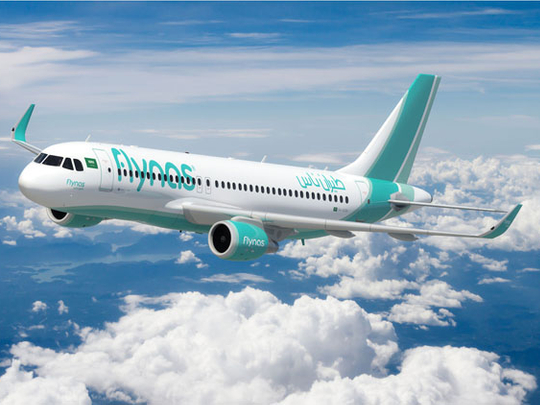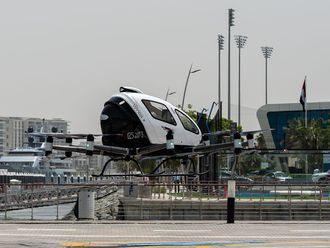
Dubai: Saudi Arabian carrier, nasair, is changing its name to flynas and is switching to a hybrid model in a move to attract 20 million passengers annually by 2020, the carrier said in a statement on Wednesday.
The Saudi airline will introduce business class in all its international domestic and international services competing with other regionally-based hybrid carriers flydubai and Jazeera Airways.
flynas Chief Executive Officer, Raja Azmi, told Gulf News the new business strategy would move the airline out of the low-cost sphere.
The complete overhaul of operations at flynas comes just months after Azmi was announced as the airline’s CEO following the surprise resignation of Francois Boutellier.
The announcement to add the business class on all flynas routes by January next year follows the shift by Dubai-based low-cost carrier flydubai to a hybrid model. Last month, flydubai introduced the business class on its route to Kiev, Ukraine, and is now in the process of rolling it out on other routes.
Azmi said the reality was that many full service carriers are trying to be low cost while low-cost carriers are trying to be full service. He said flynas’ hybrid shift kept the airline one step ahead.
“From a Middle East market perspective there is demand for a business class,” he said.
flynas is banking on its new strategy becoming popular among business travellers in the Gulf. The airline predominantly flies pilgrims due to the religious significance of several destinations in Saudi Arabia and workers due to the reliance of an expatriate workforce.
The ambitious revamp will also include the opening of two new hubs in Saudi Arabia in Madinah and Dammam.
The Dammam hub will be primarily used to serve destinations in Saudi Arabia and the Madinah hub will be used for domestic and international flights starting with Istanbul and shortly followed by Antakya in Turkey.
Azmi said that while the airline was looking at new routes in the Middle East and possibly beyond, “there is some room” in Saudi Arabia.
“We’re still bullish on the Kingdom and on the Gulf Cooperation Council (GCC) countries”, he said.
As part of its new business strategy, the airline will look to add, boost and cut routes.
Riyadh-Jeddah, along with some Turkish routes, are some of the most profitable for the airlines but Azmi said there was significant room for growth in flights from Saudi Arabia to Dubai.
The airline’s position in the UAE has generated some confusion in recent weeks after the airline backtracked on plans to fly from Dubai’s newest airport Al Maktoum International at Dubai World Central.
Then known as nasair, flynas was set to be one of the launch carriers at the new airport when it opened last month.
Azmi said the airline still intends to fly from Al Maktoum International but could not give an expected start date.
He said it was possible the airline would continue to fly from Dubai International once it commenced Al Maktoum International operations.
flynas also flies to Abu Dhabi International Airport and Sharjah International Airport.












